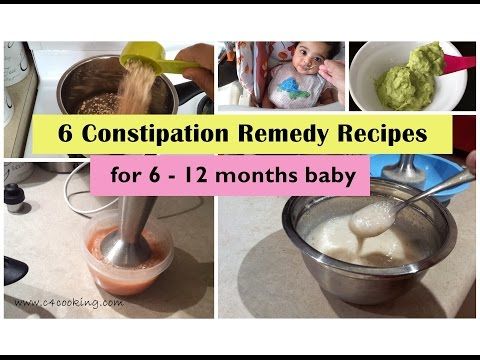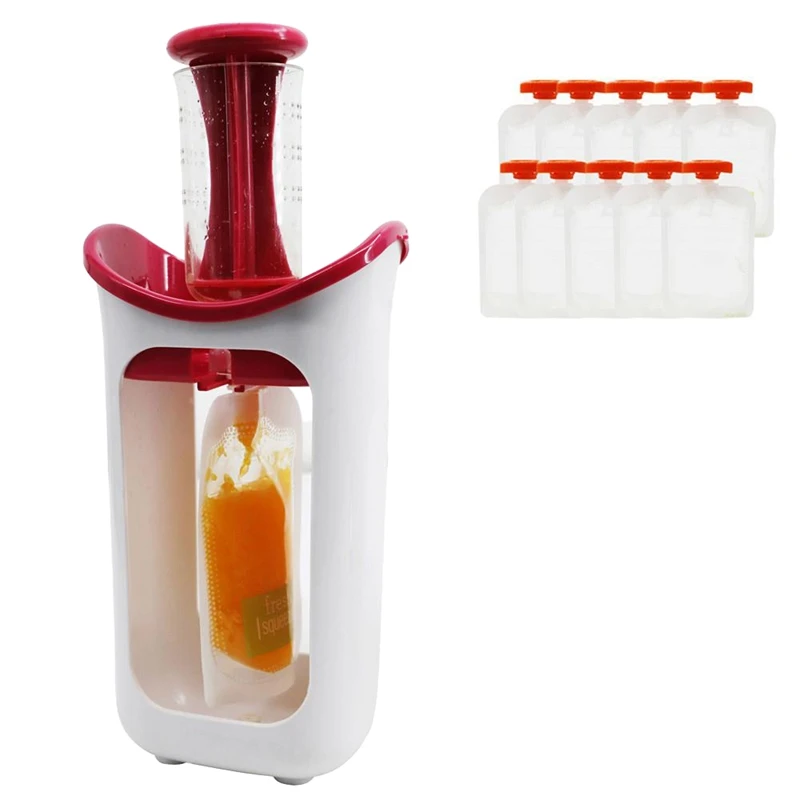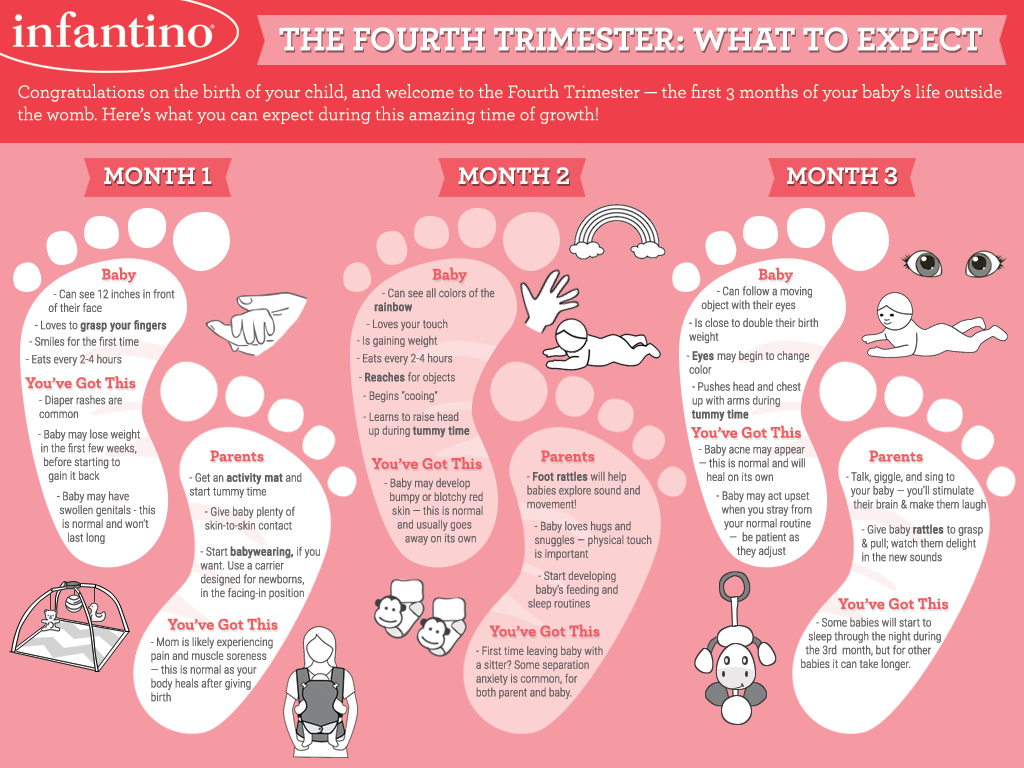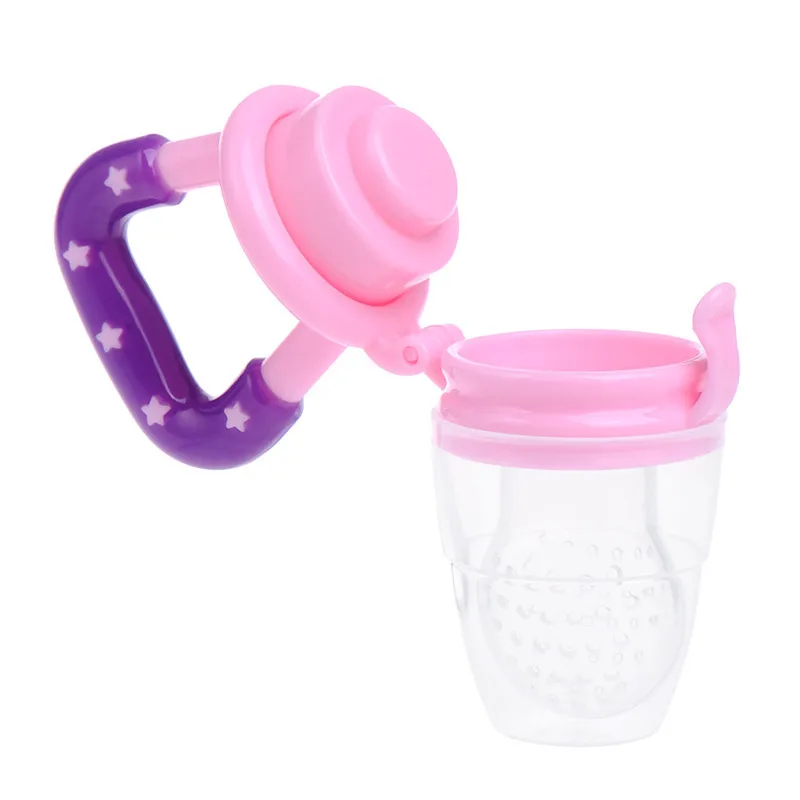Good foods for constipated babies
Are There Baby Foods that Help with Constipation?
While parenting brings many surprises, one of them is likely how much you’ll think about poop, or lack thereof, especially during that first year. But here you are worrying about your baby’s digestive tract and convinced that they’re constipated.
If you’ve recently introduced your baby to solid food, then your worries may be on target: solid foods can put a strain on your baby’s developing digestive tract and cause constipation. But there are things you can do to help!
Before you begin treating constipation you should determine if there is really an issue at all. So here’s the scoop on poop and how to tell if your worries are founded and your baby is constipated.
Breastfed babies
During the first few weeks, you’ll find yourself changing diapers with alarming regularity. Figure in every feed or so.
But don’t despair, because by the time your baby reaches 6 weeks old, they may have a bowel movement only once or twice a day. On the other hand, they may have one only every 7–10 days. (Yep, the frequency really can vary that much.)
The poop is yellow, soft, runny and sometimes lumpy and the smell isn’t unpleasant.
Formula-fed babies
A newborn, formula-fed baby typically poops up to five times a day. At about 6 to 8 weeks, this may decrease to around once a day.
Formula-fed babies have poop that is a camel to brown color with a thicker consistency, more like paste. Most likely, the less-than-aromatic smell means you’ll hermetically seal soiled diapers before you toss them into the garbage.
Signs that your baby is constipated
You’ve noticed that your baby’s tummy isn’t following the schedule that you got used to. Could it be constipation? Here are the signs that could confirm your suspicions:
- You notice that they cry or fuss while they’re trying to have a hard bowel movement.
- The poop, when it does come, is like hard pellets.
- You notice streaks of red blood in the hard poop.
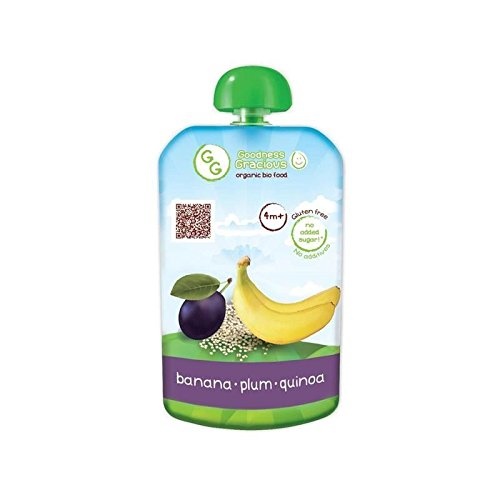
While it’s not easy for a baby on a liquid diet to become constipated, trouble can start when you start introducing your baby to solid foods at around 6 months. Here’s why:
New food types
Think of it as a learning curve: Your baby’s body is learning how to cope with a new kind of food to digest as they move away from their full liquid diet and you need to soften the learning curve. (Pardon the irresistible pun.)
Changes to fluid intake
Decreased fluids will make your baby’s poop harder and more difficult to push out. If they’ve started solids, they may need to up their fluid intake to offset the solid food. And if your baby is teething or feeling unwell, it can also lead to them taking in less fluid than usual.
Lack of fiber
Even though they’re just starting out, babies’ tummies work like ours. While initially the move to solids that have fiber (from breast milk or formula, which don’t) can cause temporary constipation, their tummies will adjust.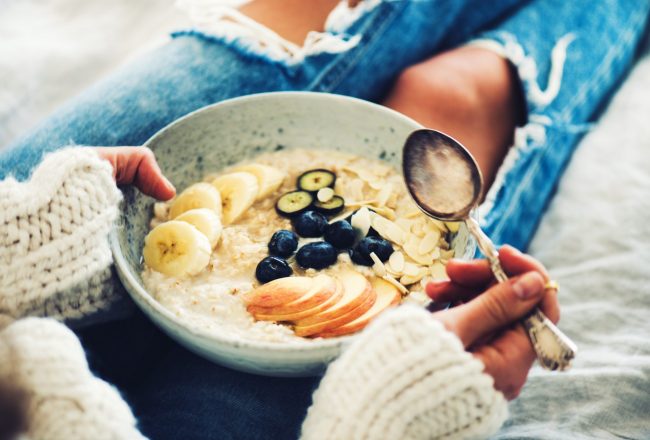
Make sure to monitor your baby’s fiber intake and pair it with plenty of hydration for a smooth ride the same way that you monitor yours.
OK, so you’ve confirmed that your baby is constipated. The next step is helping to alleviate the strain on their developing digestive system.
Remember that you can keep offering these foods as your baby develops into a toddler and beyond. In fact, there is little research or evidence to support specific foods (including high fiber ones) in treating or preventing constipation in infants. Most of these recommendations are based on evidence for older adults and children.
Keep in mind that good practice when introducing solids is to introduce foods as single ingredients. That way, if your baby is allergic to certain foods, you’ll be able to more easily trace the source.
If your little one hasn’t tried these foods before, don’t rush the process. Test out one at a time and then introduce combinations once you’re confident they’re well tolerated.
- Back to basics. Give your baby’s digestive tract a break by feeding them mashed avocado or sweet potato purée. These are easy to digest and may give your baby the kick start they need.
- B vegetables. Think broccoli, Brussels sprouts, and beans. Purée these for a meal filled with fiber.
- P fruits. Your grandmother was right — bring on the prunes for quick work. A purée that includes a mix of prunes plus pears, plums, or peaches should work magic. Try subbing the prunes with dates for a change.
- Bring on the fiber. If your baby is over 8 months, you can offer them whole grains like oatmeal, fiber-rich cereals, whole wheat pasta, and brown rice.
- Water intake. Until 6 months an exclusively breastfed or formula-fed baby doesn’t need to drink water. Above this age, you can introduce small amounts of water.
Plums and pears with cinnamon
Cut 2 or 3 pears and plums into small pieces. Place in a saucepan with a small amount of water and simmer until soft. Add in a sprinkle of cinnamon. Blend thoroughly.
Place in a saucepan with a small amount of water and simmer until soft. Add in a sprinkle of cinnamon. Blend thoroughly.
Sweet potato with apple and peach
Cut half a sweet potato, one apple, and half a peach into small pieces. Place in steamer basket and cook until tender. Blend until smooth.
Spinach and apple purée
Chop two apples into small chunks and cook in saucepan with about 1/2 cup of water. When they’re tender, add about 1 cup of spinach and cook another 2 to 3 minutes. Purée until smooth. Can be seasoned with cinnamon and ginger.
Some sources suggest prune, pear, and apple juices help to increase the water content in poop and can ease constipation.
However, the American Academy of Pediatrics recommends steering clear of fruit juice for children younger than 1 year old. You can stick with these fruits as purées for similar effects.
What is it about prune juice? The high levels of sorbitol and phenolic substances in prune juice and dried plums act as a laxative and diuretic properties.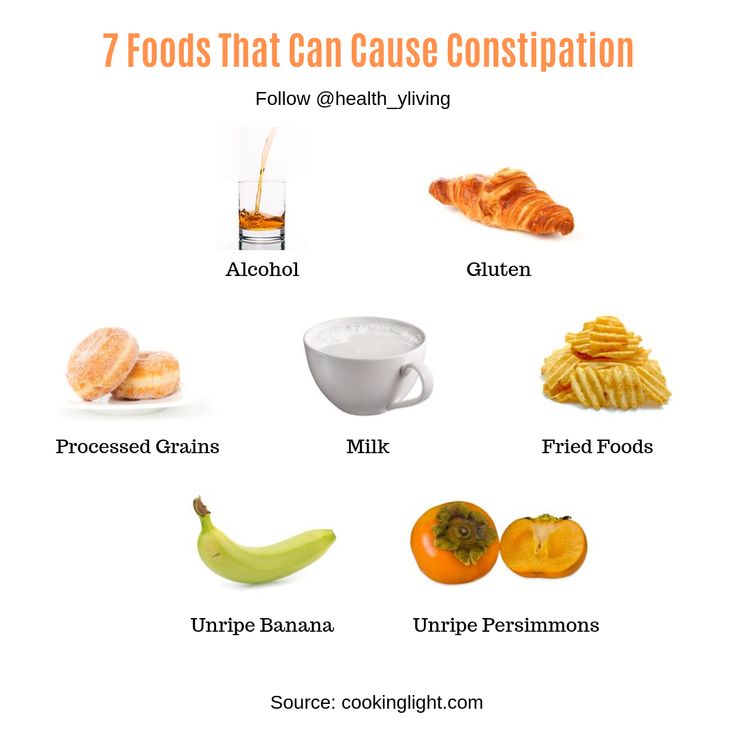 So if your child is over 1 year old, you can use small amounts of prune juice to encourage their system to run.
So if your child is over 1 year old, you can use small amounts of prune juice to encourage their system to run.
Some studies show that constipation may affect as much as 30 percent of children. If your child is part of the unlucky statistic, here are some foods that you may want to give them smaller amounts of until it passes:
- bananas
- dairy products such as cheese and yogurt
- low fiber foods like white rice, white bread, and white pasta
If you’re like most parents, you’ll be up for whatever you can try to help your baby get comfortable fast. Here are a few tricks that you can use to ease your baby’s constipation:
- Warm baths. These can relax those abdominal muscles and get them working.
- Exercise. Lay your baby on their back and push their legs alternately as if they’re cycling a bike. Alternatively, hold their knees and feet together and push their feet towards their belly.
- Massage.
 Use your fingertip to draw clockwise circles on your baby’s stomach.
Use your fingertip to draw clockwise circles on your baby’s stomach.
If you see that despite your home remedies, your baby still is having hard stools or hasn’t pooped after 2 or 3 days from their last hard stool, then contact your pediatrician. Especially if you consistently notice blood in their poop or your baby is extremely irritable and appears to be in pain.
While dealing with your baby’s toilet issues may seem a tad unsavory, you’ll soon be so used to it, that you’ll find yourself sharing your insights over coffee with other parents. And don’t be shy about sharing the yummy food combinations you discover to keep things moving.
The Best Foods to Help Baby Poop (And a Few That Make It Worse)
Relieving your constipated baby can be as simple as feeding her the right thing. Load up on these foods to help baby poop (and avoid ones that worsen the problem).
1 / 11
SMarina/Shutterstock
Relieves Constipation: Prunes
No surprises here; prunes are one of the best high-fiber foods for a baby who’s having tummy troubles.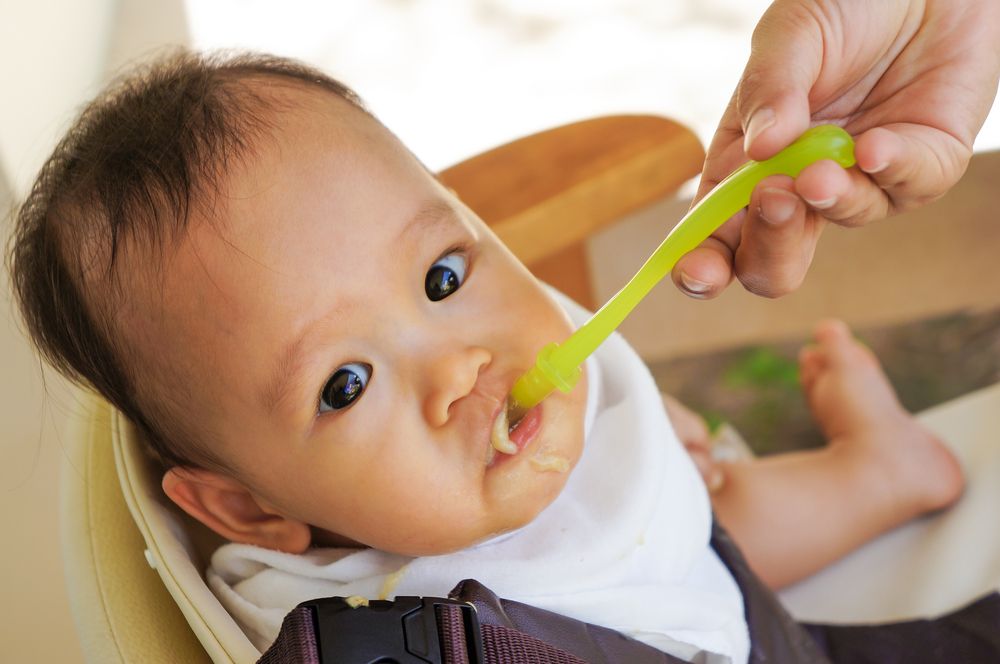 If your little one is just starting solid foods, try cooking and mashing some prunes to feed her. You could also chop cooked prunes into small, bite-sized pieces—or use one of our other creative techniques for introducing new baby foods.
If your little one is just starting solid foods, try cooking and mashing some prunes to feed her. You could also chop cooked prunes into small, bite-sized pieces—or use one of our other creative techniques for introducing new baby foods.
2 / 11
margouillat photo/Shutterstock
Relieves Constipation: Sweet potatoes
Sweet potatoes are delicious just about any way you prepare them, and they are also magic for a baby who needs to poop. They’re high in insoluble fiber, which will help your baby go right away. Try making your own baby food by cooking and mashing a sweet potato or roast fries in the oven for fun finger food.
This is how you know when to start feeding babies solid foods.
3 / 11
Mia Stern/Shutterstock
Relieves Constipation: Apples
An apple a day can keep constipation away! Apples (especially with the skin on) are high in fiber and can help pull water into your baby’s colon.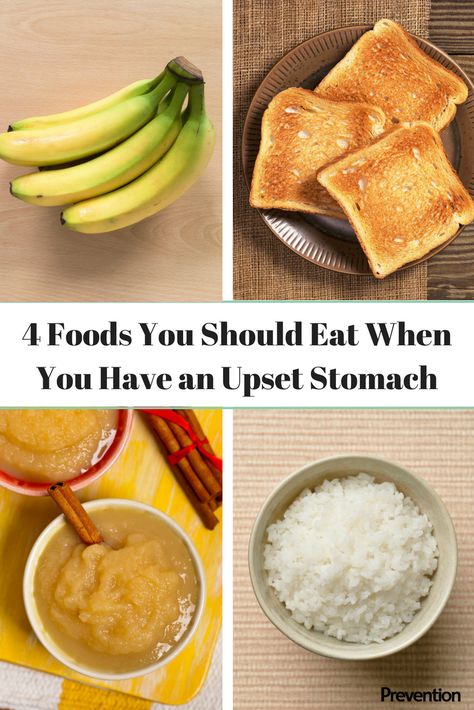 This keeps baby’s poop soft and easy to pass. Try offering small pieces of cooked apple or pour some apple juice into a sippy cup to help get things back on track. Apples are a great stage 1 baby food. Learn more about what types of food to start feeding baby once they’re ready to go beyond formula or breastmilk.
This keeps baby’s poop soft and easy to pass. Try offering small pieces of cooked apple or pour some apple juice into a sippy cup to help get things back on track. Apples are a great stage 1 baby food. Learn more about what types of food to start feeding baby once they’re ready to go beyond formula or breastmilk.
4 / 11
mama_mia/Shutterstock
Relieves Constipation: Broccoli
If your baby hasn’t tried broccoli yet, there’s no time like the present! Broccoli is a vitamin powerhouse and is high in fiber. Try blending up cooked broccoli in a food processor or offering small, bite-sized pieces of soft, cooked broccoli. (Consider one of our recommended baby food makers.) If your baby is eating a variety of foods, try adding small pieces of broccoli to brown rice or scrambled eggs.
When he’s a little older, your kid will love these tasty broccoli side dishes.
5 / 11
nelea33/Shutterstock
Relieves Constipation: Pears
There is nothing more delicious than a ripe, juicy pear. Treat your baby to this seasonal treat to help relieve and even prevent constipation. Pears are one of the first foods babies can try and are high in fiber. They can be cooked, but are soft enough to be offered raw. Your baby can safely gum small pieces of ripe pear without teeth.
Treat your baby to this seasonal treat to help relieve and even prevent constipation. Pears are one of the first foods babies can try and are high in fiber. They can be cooked, but are soft enough to be offered raw. Your baby can safely gum small pieces of ripe pear without teeth.
6 / 11
Sea Wave/Shutterstock
Relieves Constipation: Peas
If your baby is just starting solid foods, peas are usually one of the first options. This is good news if your baby needs help in the pooping department. Peas contain both soluble and insoluble fiber to help keep your baby’s poop soft and moving along. This makes it easier and quicker to pass without painful straining.
7 / 11
nesavinov/Shutterstock
Relieves Constipation: Spinach
We usually save the fresh spinach for our own salads, but babies should be invited to the greens party, too. Spinach is loaded with fiber and vitamins that help make your baby’s poop easier to pass. Try blending up some fresh spinach in a fruit smoothie for both of you!
Spinach is loaded with fiber and vitamins that help make your baby’s poop easier to pass. Try blending up some fresh spinach in a fruit smoothie for both of you!
8 / 11
Brent Hofacker/Shutterstock
Causes Constipation: Cheese
Dairy products like small cubes of cheese or lightly flavored yogurt are easy foods for babies learning to eat solids. While safe and convenient, cheese is a low-fiber snack and can lead to constipation. Try cutting back on the dairy products for a few days and see if your baby improves.
You may think these foods are dairy-free, but they’re not!
9 / 11
Paulo Vilela/Shutterstock
Causes Constipation: Bananas
Bananas are a great first finger food for babies (and a yummy way to cut calories when baking). Unfortunately, they can also slow down your baby’s digestion, and thus slow down their pooping. Take a brief break from bananas and use this opportunity to give some new fruits a try.
Take a brief break from bananas and use this opportunity to give some new fruits a try.
10 / 11
images72/Shutterstock
Causes Constipation: Cereal
Whether your child is just starting out with rice cereal or has graduated to carrying a bag of Cheerios with her wherever she goes, babies and toddlers cannot get enough of this favorite first food. Cereal can lead to more formed poop, which could slow down the number of poopy diapers each day. Try cutting back on the amount of cereal and incorporating more fresh fruits and veggies.
Use up those Cheerios in one of these genius recipes.
11 / 11
Igor Dutina/Shutterstock
Causes Constipation: Processed foods
Processed foods like cookies, crackers and white bread are common snacks for growing babies and toddlers, but too much can quickly lead to constipation. While you don’t have to cut these foods out entirely, try to limit them if your baby is having tummy troubles. Or, try swapping out white flour for whole wheat. For example, brown rice is a tasty alternative to low-fiber white rice.
While you don’t have to cut these foods out entirely, try to limit them if your baby is having tummy troubles. Or, try swapping out white flour for whole wheat. For example, brown rice is a tasty alternative to low-fiber white rice.
Originally Published: May 20, 2019
Carrie Madormo, RN
Now a freelance health and food writer, Carrie worked as a nurse for over a decade. When she isn't hunched over her laptop with a baby in hand, you will find her cooking her grandmother’s recipes, lacing up her running shoes or sipping coffee in the bathroom to hide from her three young children.
How to feed a child with constipation. Dietary recommendations for children with constipation But when it comes to diseases of the gastrointestinal tract, they take on special significance. After all, it is in the management of such diseases that nutrition occupies one of the leading places.
When planning a diet for a child with constipation, remember the following principles:
1. eating at the same time
eating at the same time
2. a varied full menu
3. avoiding "nibbling" and eating dry food
4. foods with a laxative effect (by age)
5. eliminating foods from the diet with astringent action and inhibiting motility
6. adequate drinking regimen.
If we are dealing with a child of the first 6 months of life who is exclusively breastfed , then we do nothing with its power supply. We give recommendations to the mother on correcting the diet, increasing the amount of fluid she consumes, and reminding her of the need to control the regularity of her own stool. Such children can introduce vegetable complementary foods a little earlier (zucchini, pumpkin, cabbage), an apple, buckwheat and oatmeal are preferable from cereals. From the moment of the introduction of complementary foods, you can give additional liquid - water, children's teas with fennel
If the baby is on mixed or artificial feeding , it is recommended to use anti-reflux mixtures containing locust bean gum as a thickener. We do not use for this purpose breast milk substitutes containing rice starch, which has a fixing effect. As an option, try to mix with lactulose or partially replace the “sweet” mixture with fermented milk (but not more than half of the daily amount of food).
We do not use for this purpose breast milk substitutes containing rice starch, which has a fixing effect. As an option, try to mix with lactulose or partially replace the “sweet” mixture with fermented milk (but not more than half of the daily amount of food).
Older children can be introduced into the diet of functional foods enriched with lacto- and bifidobacteria. The use of foods rich in dietary fiber is justified - vegetables and fruits, leafy greens, coarse-fiber cereals, muesli. But remember that inhibit motility and have an astringent effect on such useful products as rice, kissels, mucous decoctions, bananas, dry blueberries (fresh laxatives), quince, pear, pomegranate, cocoa, chocolate, turnip, radish, radish, onion, garlic, mushrooms .
If constipation is hyperkinetic, flatulence occurs, then foods that cause increased gas formation (milk, cabbage, legumes) are excluded, it is preferable to eat dishes that have undergone heat treatment.
Fiber can be added.
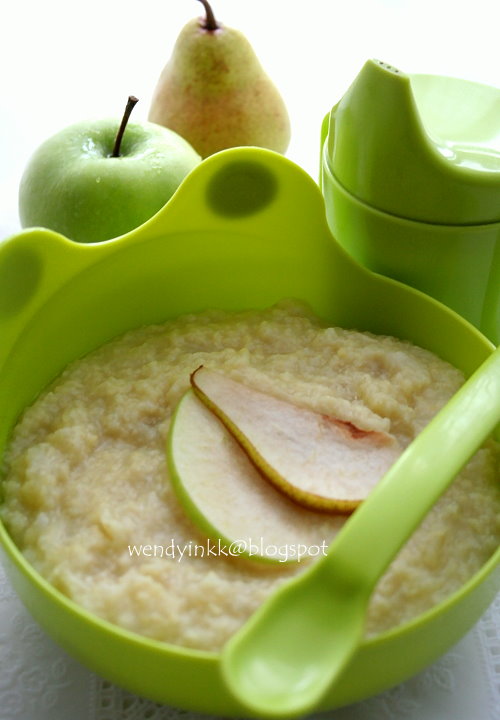
But remember that its daily amount for a child is calculated by the formula:
Amount of fiber (grams per day) = child's age (years) + 5 years
Be sure to analyze drinking regime . The amount of liquid consumed should be sufficient (we focus on the liquid consumption for a child with a given body weight). In the recommended "bar", in addition to water and children's teas, there will be freshly squeezed vegetable and fruit juices, as well as compotes from fruits that are acceptable for the diet, and rosehip infusion. It is recommended to drink a glass of cold water in the morning on an empty stomach. In the absence of food intolerance, allergic reactions, water can be sweetened with honey.
When choosing mineral water , you need to focus on the type of constipation:
food at the rate of 3-5 ml/kg per intake 2-3 times a day
2. with hyperkinetic constipation, with constipation in the structure of irritable bowel syndrome, weakly alkaline mineral waters are indicated - "Essentuki No.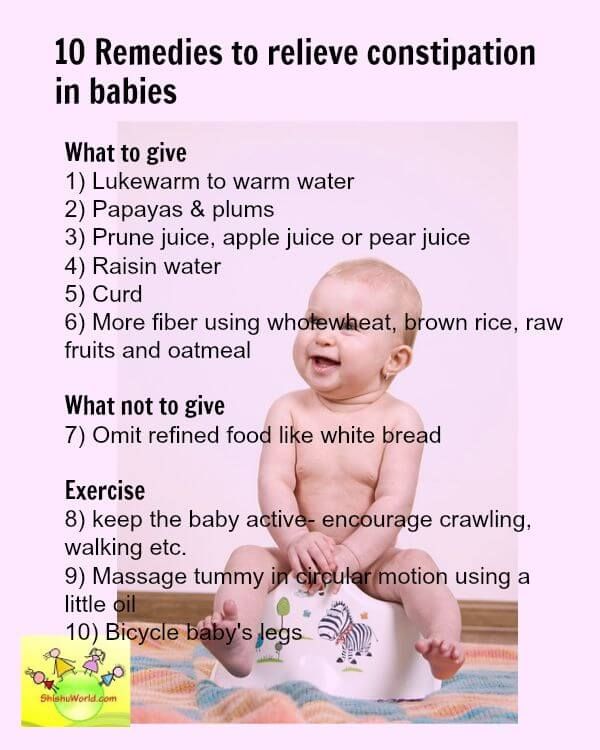 4", "Slavyanovskaya", "Smirnovskaya" , degassed, warm.
4", "Slavyanovskaya", "Smirnovskaya" , degassed, warm.
This diet should help the intestines to work properly. It can also be considered as a prevention of constipation.
If the problem could not be solved by the regimen and diet, the pharmaceutical industry will have to resort to help.
No comments
Adding comments is available only to registered users
Proper diet for constipation
Understanding constipation
Constipation, or constipation, is a very common defecation disorder in which bowel movements are complicated. Individual episodes are often associated with nutritional errors or functional disorders, while chronic constipation often indicates diseases of the gastrointestinal tract or other organs and systems.
Key symptoms of constipation are:
- Defecation less than 3 times a week.
- Defecation with dry, hard stools, which often look like separate lumps.
- The need for additional straining for defecation.

- Sensation of "blockage" of the rectum.
- Feeling of incomplete emptying of the bowels.
- The need for assistance with defecation (hand pressure on the abdomen and manual manipulation to remove stool from the rectum).
Diet for constipation
One of the key roles in the fight against constipation is nutrition correction. Often, changes in eating habits and lifestyle are enough to eliminate constipation that is not associated with other diseases, as well as to prevent their occurrence in the future.
List of useful foods for constipation
Prunes help to cope with constipation. Photo: alexeyzhilkin - ru.freepik.comThe basis of the diet of people with a tendency to constipation should be dominated by foods that contain dietary fiber - fiber.
The most useful foods for constipation are:
- Prunes. The insoluble fiber in prunes increases the amount of water in the stool, preventing constipation.
 It also contains sugar alcohol (sorbitol), which has a laxative effect.
It also contains sugar alcohol (sorbitol), which has a laxative effect. - Apples. They contain a large amount of pectin, which can improve intestinal motility, promote the growth of beneficial bacteria and eliminate the symptoms of constipation.
- Pears. In addition to being high in fiber, pears also contain fructose and the previously mentioned sorbitol. Due to these substances that are not absorbed in the large intestine, removing water into its lumen, pears can cause a laxative effect.
- Citrus. Oranges, grapefruits and tangerines are rich in pectin and naringenin, which increase the secretion of fluid into the colon, causing a laxative effect. It is recommended to use them raw.
- Spinach and other greens. Greens such as spinach, brussels sprouts and broccoli are rich not only in fiber, but also in vitamins C and K, as well as folic acid, which have a positive effect on bowel function.
- Legumes: beans, peas and lentils. Legumes contain a mixture of insoluble and soluble fiber.
 This means they can relieve constipation by bulking up stools, as well as softening them to make bowel movements easier6.
This means they can relieve constipation by bulking up stools, as well as softening them to make bowel movements easier6. - Kefir. Contains bacteria and yeast that improve the functioning of the digestive system. It also thins the stool, improving bowel movements.
List of undesirable foods for constipation
Dairy products, red meats and alcohol are not desirable for constipation. Photo: MedPortalCorrection of nutrition for constipation includes not only the addition of more fluid and dietary fiber, but also the restriction or complete rejection of other foods that can provoke this defecation disorder [8]. These products include:
- Alcohol. Alcoholic beverages, especially in large quantities, lead to the loss of large amounts of fluid in the urine, which contributes to constipation [9].
- Milk and dairy products. It is believed that milk, due to the increased sensitivity of the human body to its proteins, can provoke constipation.
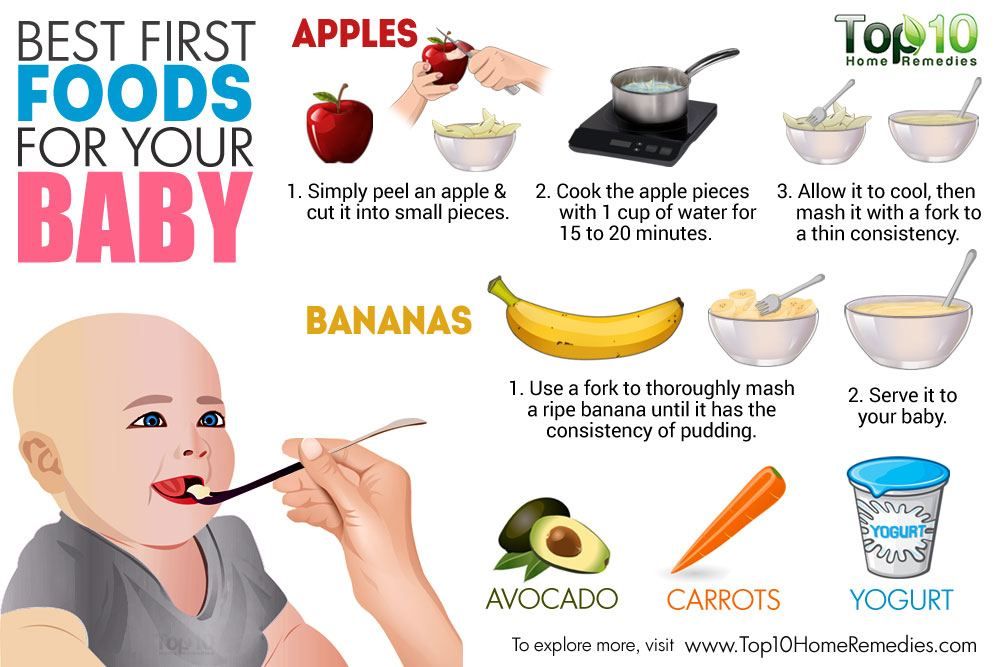 Children under 12 years of age are most susceptible to this effect [10].
Children under 12 years of age are most susceptible to this effect [10]. - Red meats, which are high in fat, increase the risk of constipation [11].
- Fried food and fast food. Like red meat, these foods are high in fat and low in dietary fiber. In addition, a large amount of salt is used in its preparation, which worsens the course of constipation.
- White rice, unlike brown, lacks bran and other major sources of fiber, which can also cause constipation.
- Gluten products. Gluten is a protein found in grains such as wheat, barley, and rye. It has been found to be associated with constipation, and also impairs bowel function and damages it in celiac disease and irritable bowel syndrome [12].
Nutrition for children with constipation
Broccoli puree helps to normalize stool in young children. Photo: [email protected] / Depositphotos The fight against constipation in children of preschool and primary school age is similar to that in adults: in such situations, the same advice on nutrition and lifestyle changes is relevant.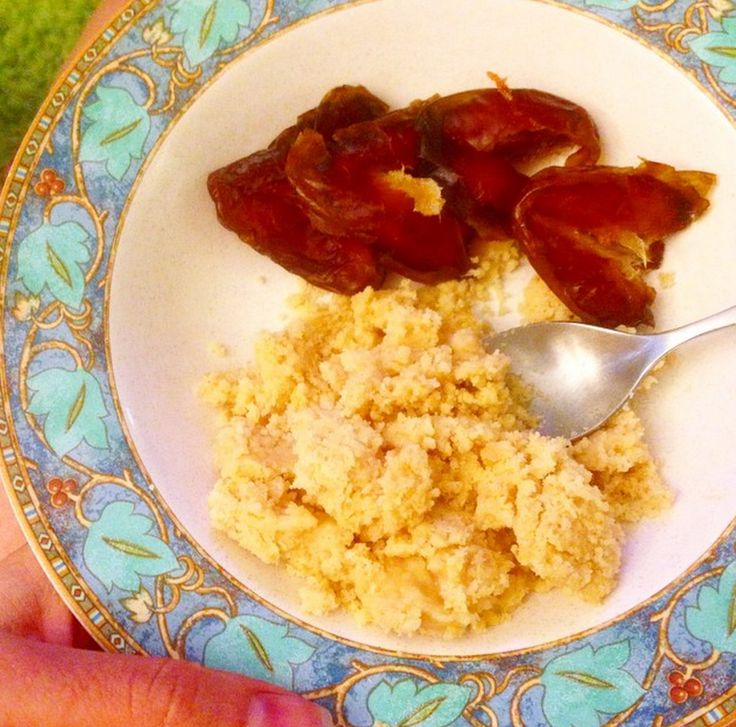
“You should try to adjust the stool with a diet: give the child more water (a liter per day or more). Introduce more vegetable fiber (salads, vegetable stews), juices (plums, prunes), fermented milk products (yogurts), laxative foods (beets, pickles), etc. You should also try to involve the child himself in the treatment, make it an entertaining game, motivate for the result. For example, buy a calendar with large cells and draw a smiley in the cell every day when he himself went to the toilet. Five days of independent chair in a row - deserved a guaranteed toy, two weeks in a row - a super prize. Positive reinforcement works wonders, trust me.
Well, physical activity, of course. Preschoolers do not need to be additionally stimulated, except perhaps to limit the time for gadgets and TV, but schoolchildren already need to be actively urged to enroll in a collective sports section, for example.”
An excerpt from the book of pediatrician Sergei Butriy “Health of the child.
How to learn to cope with illness and your own panic "
Infants can also suffer from constipation. It is worth noting that normally in infants, the frequency of bowel movements can vary from 1-2 times a day to 1 time in 7-10 days.
If a child has other symptoms of constipation in addition to infrequent stools, such as increased restlessness during bowel movements and hard lumps of feces, the following dietary changes are recommended [13]:
- to which you can add a mixture of prunes, pears or peaches.
- Recommended vegetables are broccoli, Brussels sprouts and legumes.
- For children over 8 months of age, whole grains such as oatmeal, high fiber cereal, whole wheat pasta, and brown rice are allowed.
- Controlling the amount of liquid you drink. Until 6 months of age, an exclusively breastfed or formula-fed baby does not need to drink water. Babies over this age can be given a small amount of water.
The following can also help a small child with constipation [14]:
- Warm baths.
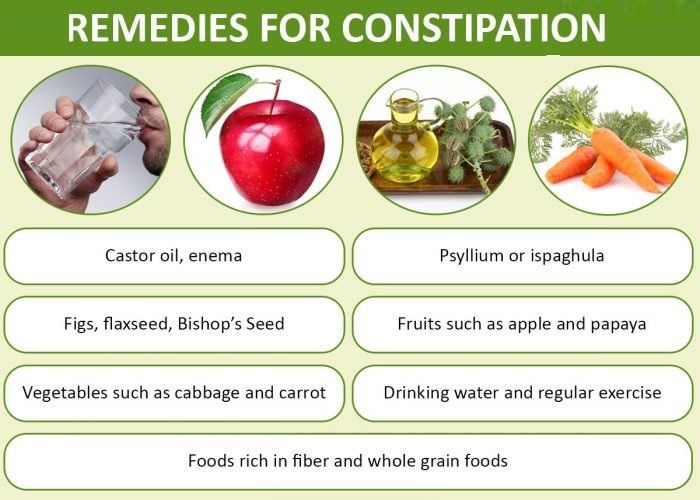 They relax the abdominal muscles and improve peristalsis.
They relax the abdominal muscles and improve peristalsis. - Exercises. Having put the child on his back, you can alternately bend his legs, as if he were riding a bicycle.
- Massage. You can improve intestinal motility by drawing circles on the child's stomach in a clockwise direction.
- If constipation persists after a few days of dietary changes, infant glycerine suppositories (suppositories) may be used. However, they are intended for occasional use only. Mineral oils, stimulant laxatives, or enemas should not be used to treat constipation in infants. But for older children with constipation, enemas and the use of laxatives under the supervision of a pediatrician are indicated.
Consequences of non-compliance with the diet
Without nutritional correction, individual cases of constipation develop into chronic constipation. At the same time, the symptoms of this disorder worsen, and the risk of developing complications increases, the most common of which are [15]:
- Hemorrhoids (Fig.
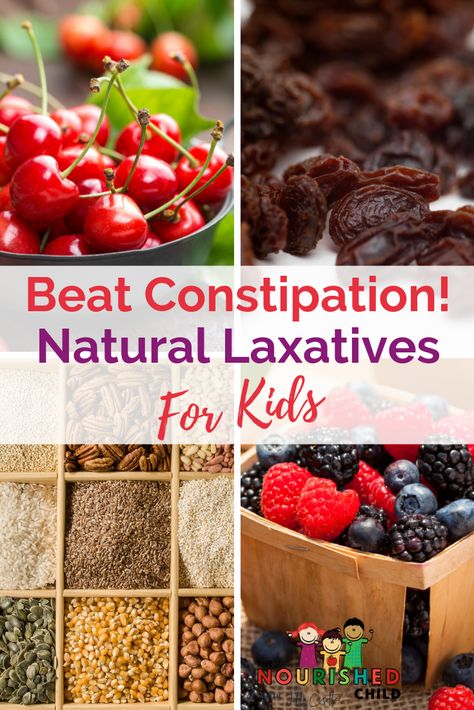 1).
1). - Anal fissures.
- Rectal bleeding.
Inflammation of the mucous membrane of the rectum and sigmoid colon - proctosigmoiditis.
Figure 1. Stages of development of hemorrhoids. Source: CC0 Public DomainConclusion
Proper nutrition and control of fluid intake are the keys to eliminating constipation in most cases. But it is important to understand that this phenomenon can be not only an isolated problem, but also a symptom of other pathologies. Therefore, if defecation disorders persist after changing the diet, you should seek the advice of a specialist.
Sources
- Constipation. National Digestive Diseases Information Clearinghouse. 2019.
- Elise Mandl. The 17 Best Foods to Relieve Constipation. health line. 2018.
- Lever E, Cole J, Scott SM, Emery PW, Whelan K. Systematic review: the effect of prunes on gastrointestinal function. Aliment Pharmacol Ther.
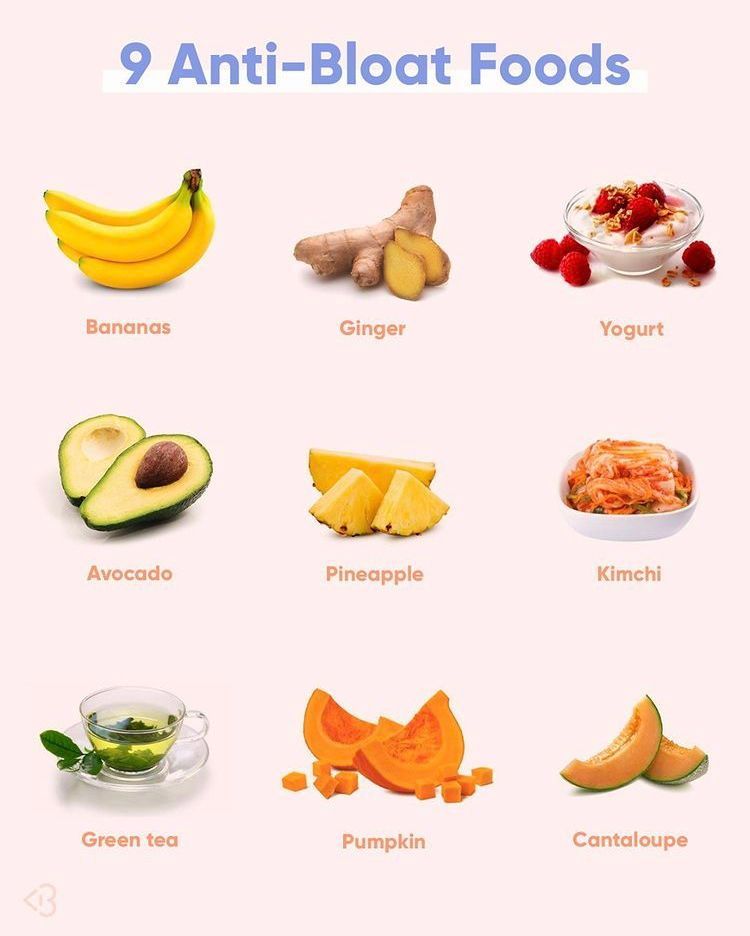 2014 Oct;40(7):750-8
2014 Oct;40(7):750-8 - Bae SH. Diets for constipation. Pediatr Gastroenterol Hepatol Nutr. 2014;17(4):203-208.
- Reiland H, Slavin J. Systematic Review of Pears and Health. Nutr Today. 2015;50(6):301-305.
- Yang, Jing et al. “Effect of dietary fiber on constipation: a meta analysis.” World journal of gastroenterology vol. 18.48 (2012): 7378-83.
- Turan İ, Dedeli Ö, Bor S, İlter T. Effects of a kefir supplement on symptoms, colonic transit, and bowel satisfaction score in patients with chronic constipation: a pilot study. Turk J Gastroenterol. 2014;25(6):650-656.
- Alina Petre. 7 Foods That Can Cause Constipation. health line. 2020.
- Bujanda L. The effects of alcohol consumption upon the gastrointestinal tract. Am J Gastroenterol. 2000;95(12):3374-3382.
- Carroccio A, Iacono G.
